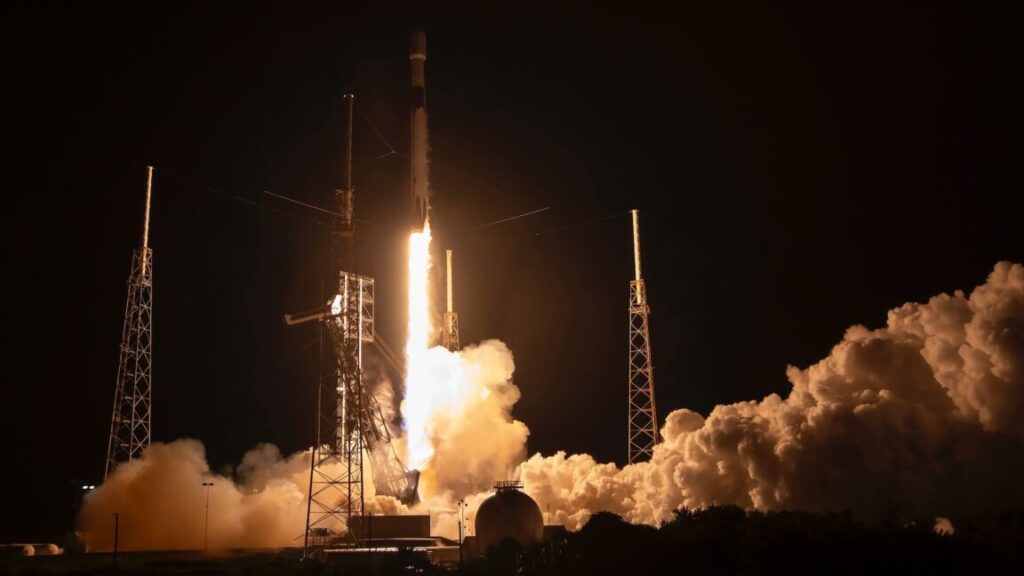A Falcon 9 rocket launched from Florida’s Space Coast overnight with a batch of Internet satellites for Amazon’s Project Kuiper network, thrusting a rival one step closer to competing with SpaceX’s Starlink broadband service. Amazon’s third set of operational Kuiper satellites lifted off at 2:30 am EST (06:30 UTC) on Wednesday from Cape Canaveral Space Force Station, Florida. SpaceX’s Falcon 9 rocket arced downrange over the Atlantic Ocean, heading northeast to place its payload into the Kuiper constellation at an inclination of 51.9 degrees to the equator. The Falcon 9’s upper stage released the 24 Kuiper satellites about an hour after launch at an altitude of approximately 289 miles (465 kilometers). The satellites will use onboard electric propulsion to raise their orbits and reach their operating altitude of 391 miles (630 kilometers). With this launch, Amazon now has 78 Kuiper satellites in orbit. The full Kuiper constellation will consist of 3,232 satellites to provide broadband Internet service to most of the populated world, bringing Amazon in competition with SpaceX’s Starlink network. Kuiper is an expensive undertaking, estimated at between $16.5 billion and $20 billion by the industry analytics firm Quilty Space. Quilty has concluded Amazon is spending $10 billion on launch alone, exceeding the company’s original cost estimate for the entire program. Amazon has booked more than 80 launches to deploy the Kuiper constellation, but the company didn’t turn to SpaceX until it had to. Amazon purchased 68 rocket flights from United Launch Alliance, Arianespace, and Blue Origin in 2022 to launch thousands of Kuiper satellites. At the time, ULA’s Vulcan rocket, Arianespace’s Ariane 6, and Blue Origin’s New Glenn hadn’t completed any launches, so Amazon reserved nine flights on ULA’s Atlas V to support the initial series of Kuiper missions.
Amazon’s ride on the rocket merry-go-round continues with SpaceX launch
